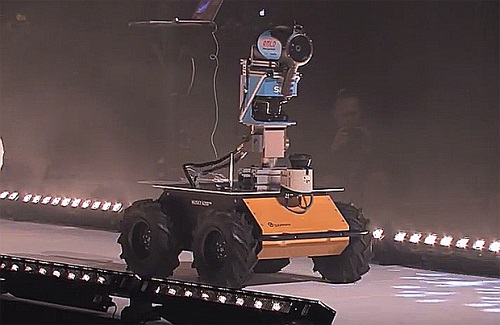Earlier this week, a team of researchers from Sweden's AASS Research Center publically announced the completion of Gasbot, a methane-gas-detecting robot prototype. Gasbot uses a new type of laser, called the Tunable Laser Absorption Spectrometer, to monitor methane gas emissions across large surfaces. The robot has successfully been able to pinpoint controlled methane leaks within a landfill located in an underground tunnel.

Gasbot bears an uncanny resemblance to Wall-E
Methane gas dangers
Methane gas is a prevalent greenhouse gas, with far more disastrous effects than carbon dioxide, warming the atmosphere 20 times faster than carbon dioxide. Scientists believe that as much as 2% of all manmade greenhouse gas emissions are due to methane leaks in landfills, pipelines, and bovine farms. Additionally, methane leaks are flammable and present hazardous conditions within landfills.
Discovering these leaks is the first step toward containment and the successful integration of mobile sensor atop automated robot renders the present method of hand placing sensors in alleged leakage areas obsolete.
Gasbot is WallE
The researchers built Gasbot from the chassis of a Clearpath Robotics Huskey A200, box-like robot mule used to carry equipment and supplies. While simple in its basic design, the machine is highly customizable for robotics research.
Atop the Huskey A200 sits the methane-detecting Tunable Laser Absorption Spectrometer and a GPS unit. The laser emits a series of alternate frequency pulses, one of which is absorbed by methane gas upon contact, allowing the system to detect the difference in the amount of scattered light. For the laser to remain cost effective as well as safe, scientists are using an erbium-YAG laser source, which is both invisible and safe for the human eye. Integrating this system with a mobile platform allows methane concentrations to be surveyed over a larger area.
Future outlook
While the barebones system has proven itself functional, scientists have a long way to go before such a robot is ready for mass production. The robot must be upgraded to maneuver over the various obstacles surfaces of an actual landfill and to independently observe wide spaces without a human controller.
Landfill mining
Landfills are thought to be untapped mountains of resources just waiting to be mined for valuable recycled materials. American landfills host approximately 4.6 million tons of electronic waste and given the amount of platinum group and rare-earth elements used in electronics today, landfills may prove to be a new supply for the declining world’s supply of such elements. The question remains, can such a system be used to detect farts?
Via phys.org
Have a question about gas detection technology? visit TechXchange and discuss.
Advertisement
Learn more about Digi-Key





